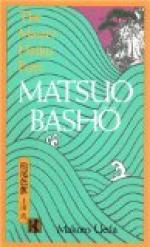|
This section contains 3,636 words (approx. 13 pages at 300 words per page) |

|
SOURCE: “Matsuo Bashō,” in The Bamboo Room: An Introduction to Japanese Haiku, Houghton Mifflin Company, 1934, pp. 18-42.
In the following excerpt, Henderson examines twenty-seven haiku by Bashō, mostly from the poet's mature years. The critic maintains that these poems are characterized by an all-embracing love for humans and the mutable world, a concentration on the beauty of the Absolute, and simple images suggestive of deep meaning and unfathomable mysteries.
Shortly after 1600 the chaos of civil war that had prevailed for centuries was brought to an end, and Tokugawa Iyeyasu established the shogunate that was to impose peace on Japan for two hundred and fifty years. In 1638, under the third shogun, a completely pacified Japan was officially isolated from the world, and in 1644 Matsuo Bashō was born.
Bashō would probably have been a poet in any age, but that in which he found himself was peculiarly favorable for the...
|
This section contains 3,636 words (approx. 13 pages at 300 words per page) |

|


